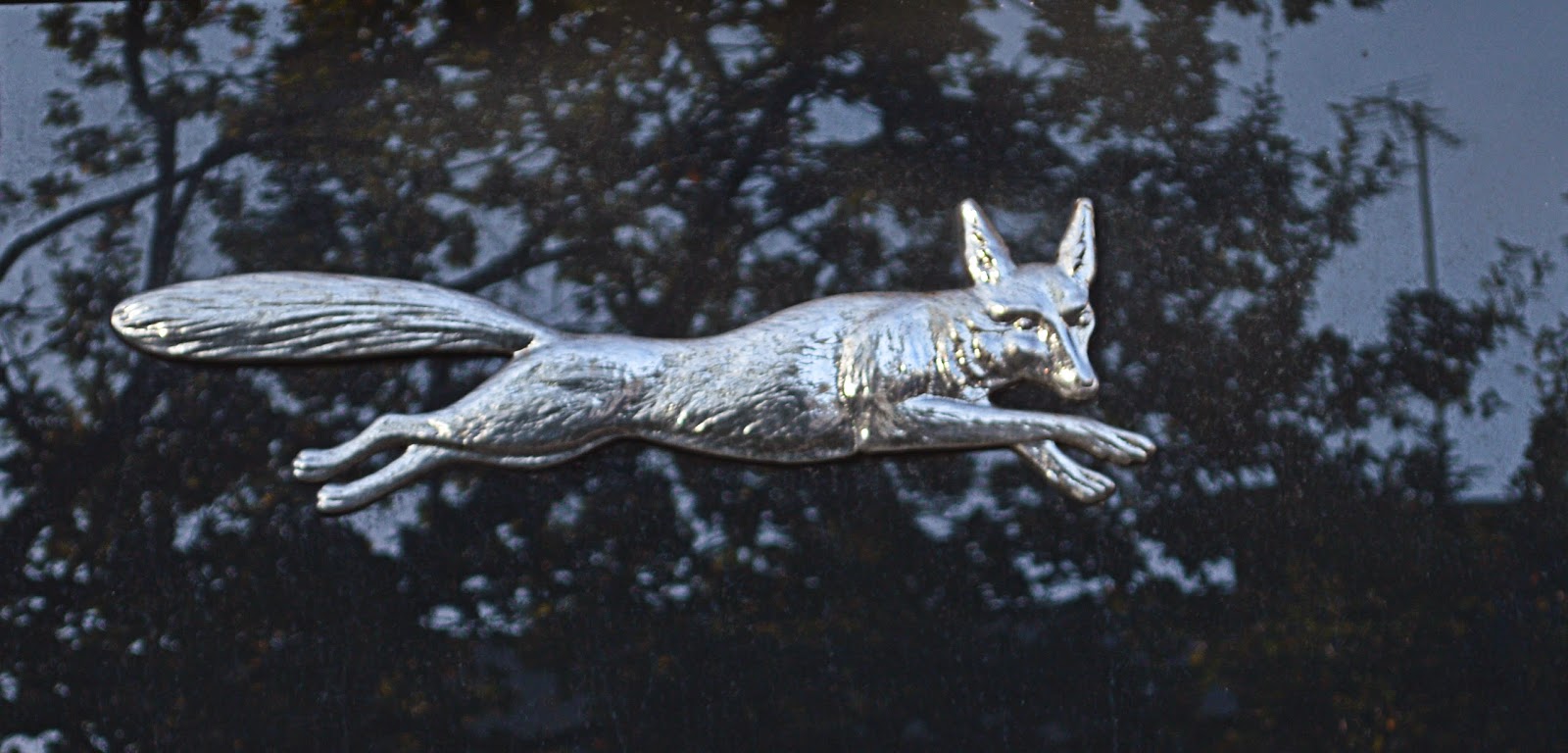Good late-1920s and 1930s shop fronts are few and far between in London. It's not that there weren't many of them - the big shopfitting firms were kept busy installing modern frontages that were all about a clean, uncluttered look with straight lines that simply framed the stock on display. But until the later 20th century there was little respect for these shop fronts - it was easy come, easy go, as they were ripped out and replaced in the post-Second World War decades.
Which is why 118 London Wall, constructed on the ground floor of an early 19th-century terraced house for Fox Umbrellas in 1937 by shopfitting firm E Pollard & Co, is such a rare survivor and has a Grade II listing. This exquisite shop front was the height of modernity at the time, with a Vitrolite front and curved, non-reflective glass, an American invention for which Pollard held the English patent. It looks like a shop from an Edward Hopper painting, dropped into London.
This 'invisible' glass, which was was very expensive, allowed passers-by to see much further into the shop and made the stock on display more visible at a time when interior lighting was duller and less sharp than today. It works, according to British History Online, by using a steeply curved concave glass to deflect light towards matt black 'baffles'. E Pollard & Co installed the same type of glass at Simpsons of Piccadilly, where it is still in place today (the store is now Waterstones).
Vitrolite, a coloured glass, was manufactured by Pilkington Brothers in the UK. Black Vitrolite was commonly used on facades between the 1920s and 1950s, but being glass it's a fragile material, prone to cracks and chips, and was costly to replace.
Stainless steel surrounds frame the fascia, windows and panels, and a band describing Fox's business is positioned above the window, below four Vitrolite panels. The fascia's centrepiece is the stainless steel and red 'FOX' sign, fronted with red neon lighting to set it aglow, with reliefs of foxes running towards it from each side.
As the shop isn't currently in use, I couldn't get any pictures of the interior, but English Heritage says it retains its polished wood and glass fittings. There's some very nice pictures of the interior here by photographer Quintin Lake, as well as a couple taken in the twilight, with the red neon sign switched on.
Fox Umbrellas started life in 1868, when Thomas Fox began making and selling umbrellas from a premises in Fore Street - which was later renamed London Wall following the post-World War Two reconstruction of the area.
Brollies used to be made at 118 London Wall, in the upstairs and basement workshops. The company is responsible for British City gent classics such as the GT9 Whangee, as wielded by John Steed in The Avengers.
Other famous customers included Winston Churchill and John F Kennedy.
The company is still trading, producing own label brollies and also supplying upmarket brands such as Alfred Dunhill and Ralph Lauren. Its factory is in Shirley, near Croydon - see the Once Was England blog for pictures of a factory visit.
However, 118 London Wall was closed in 2011 due to poor trading. Footwear retailer Author since moved in, but went into liquidation in April 2014 The shop front's listed status means it could not be changed, although the outline of a small 'Author' sign is visible on one of the four glass Vitrolite strips. The whole building, which dates from the 19th century (the first floor was originally a barber's shop), is currently up for rent at about £70,000 per annum.
As for the original shopfitter, E Pollard & Co, the company was founded in 1895 in Shoreditch and grew rapidly until it had a number of showrooms, two factories, and branches in Bristol, Manchester, Glasgow and Dublin. The business still exists today in Enfield, north London, as Pollards Fyrespan. The City showrooms that were built for it in Clerkenwell in 1919-20 are still standing, at number 29 Clerkenwell Road.





I worked in Moor House nearby (the old one) and would often have a skinhead in the barbers upstairs here (late 70's).
ReplyDeleteI worked in the main shop during the early to mid 1970’s. I had no experience and was trained by June Dixon the owner. I used to dress the window, serve customers, and identify what repairs were needed to customers umbrellas. The upper floors were where the covers were fitted to frames, they were then ironed and rolled (a skill I was taught as well) before being taken to the basement to have the handles and ferrules fitted. The basement also carried out repairs. The interior of the shop/showroom was quite beautiful and obviously original, one cabinet contained what I assumed were antique umbrellas and walking sticks. The window was concave I’d never seen a shop window like it before. I enjoyed working there and have this enduring memory of June Dixon wearing her tailored business suits and her large velour hats that’s I believe she used to buy in Harrods.
ReplyDeleteI wonder how they managed to still install that horrendous new door. That has to go.
ReplyDeleteThat door the blue one I assume you’re referring to, was not the entrance to the shop/showroom, it opened into a small passage, once inside that, to the left was the shop doorway and straight ahead were the stairs to the upper floors. During opening hours the outer door was fully open and not visible.
DeleteNice Blog. This Content Informative and Helpful to Finding Best Shop Fitters in London. if you are looking best Roller Shutters London then visit Milan Shop Front. Milan Shop Front is provide the best services in London.
ReplyDeleteNice! your blog is very informative and great. please keep sharing this information with us. If your are looking for these best Roller Shutters Liverpool services. Our company provides the best services in United Kingdom.
ReplyDelete